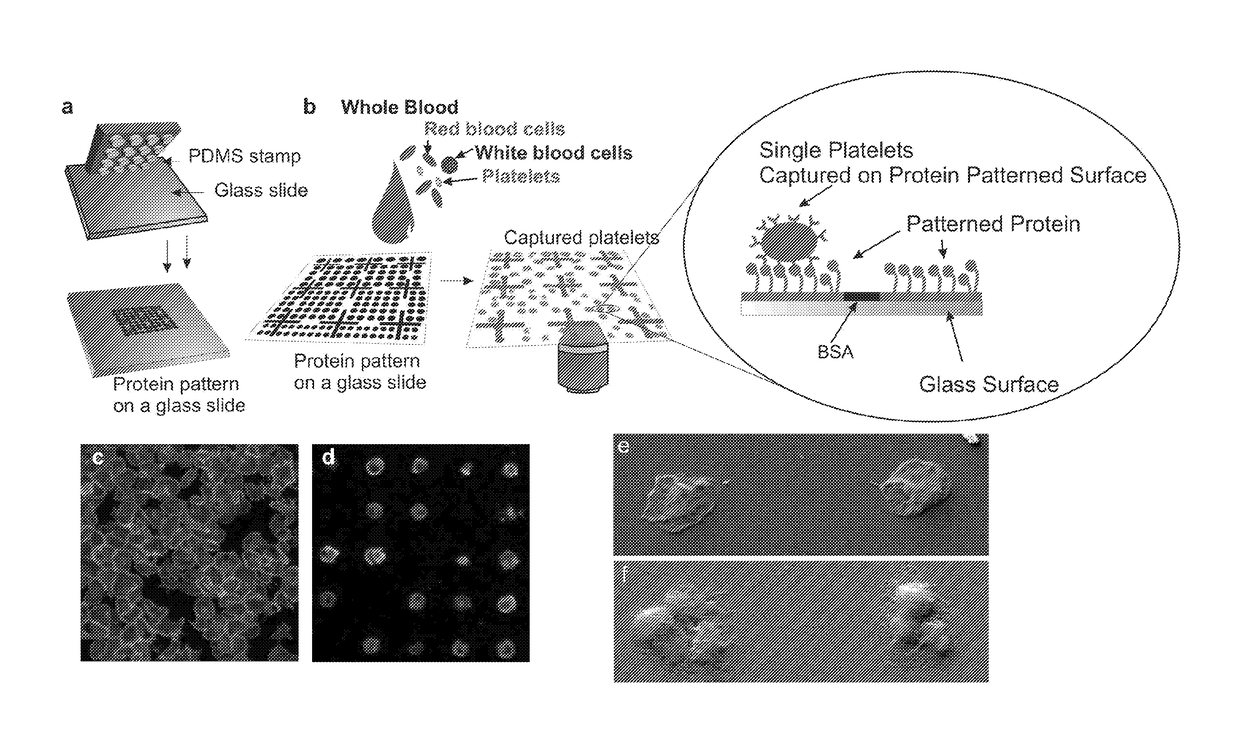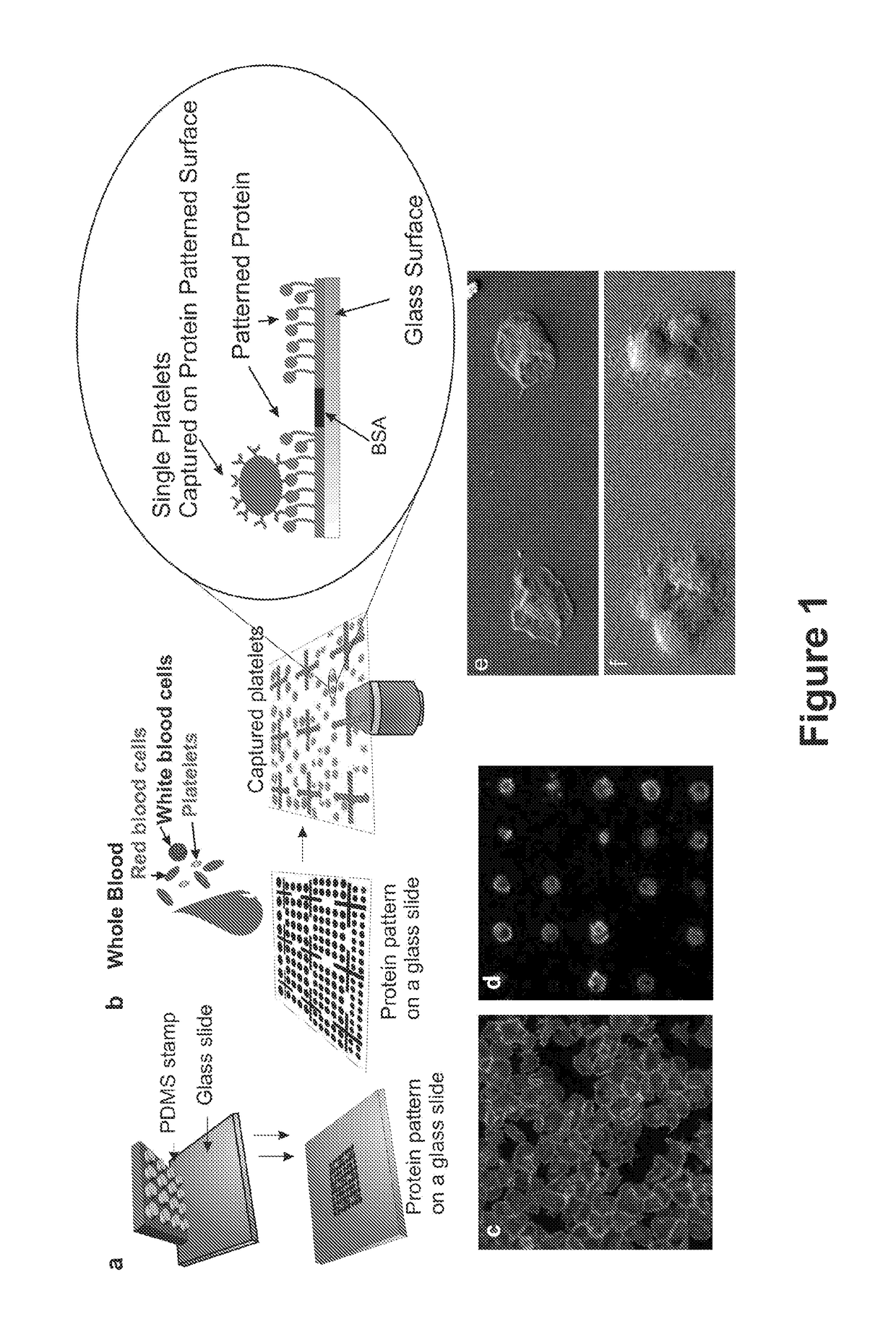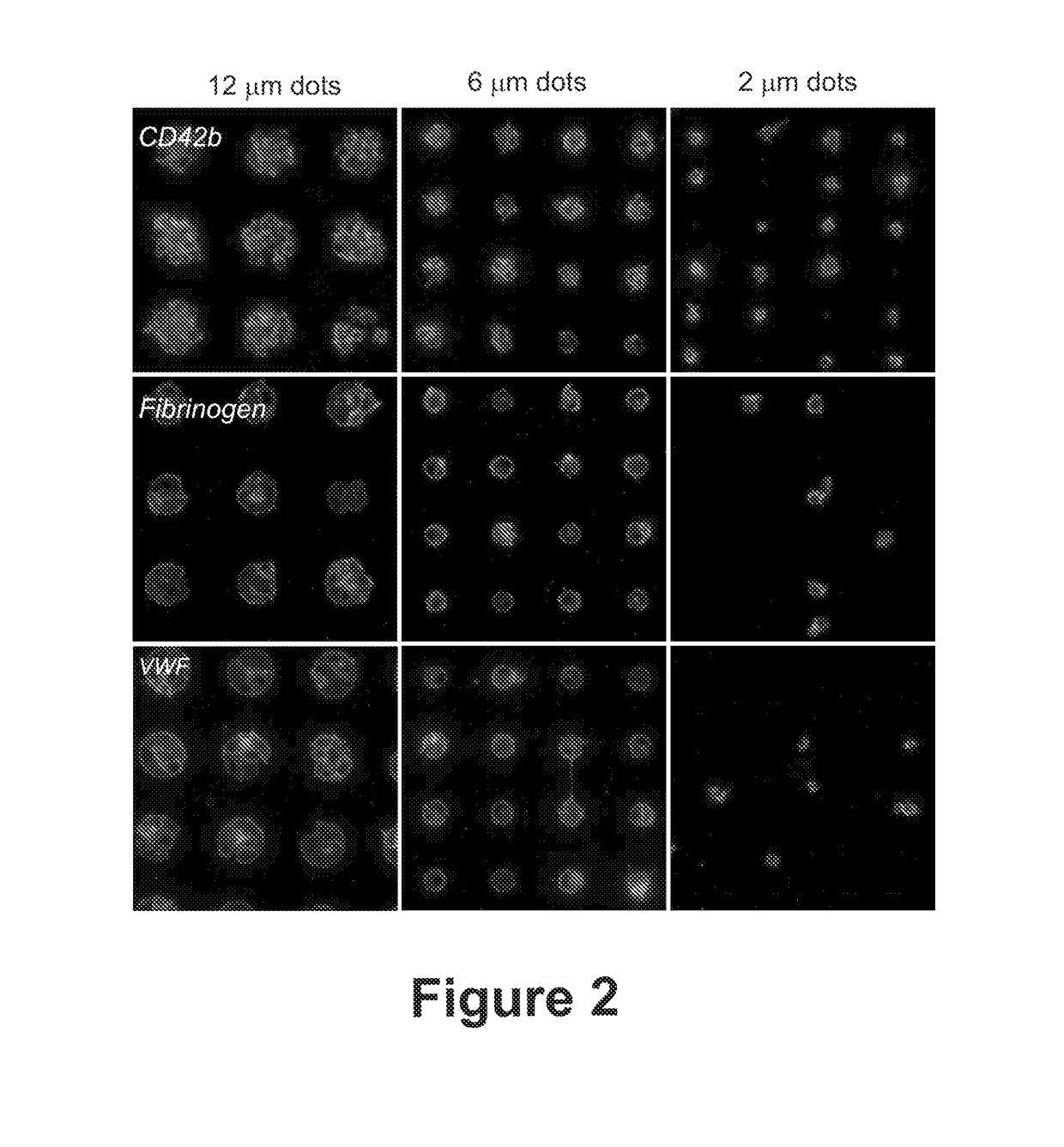Platelet analysis
a platelet and analysis method technology, applied in the field of platelet analysis, can solve the problems of difficult to accurately visually monitor platelets, difficult to accurately analyse a large number of platelets using such known platelet adhesion assays, and no adhesion assay available to analyse, so as to prevent further platelet activation, reduce the difficulty of detection, and improve the effect of detection efficiency
- Summary
- Abstract
- Description
- Claims
- Application Information
AI Technical Summary
Benefits of technology
Problems solved by technology
Method used
Image
Examples
example 2
[0113]Fabrication of Single Platelet Microarrays from Whole Blood
[0114]Materials
[0115]For the fabrication of Polydimethylsiloxane (PDMS) stamps for microcontact printing, Dow Corning Sylgard 184 was purchased from Farnell (Farnell Ireland, Dublin, Ireland) MICROPOSIT™ S1818™ Positive Photoresist (Chestech Ltd, Warwickshire, UK) was used in the fabrication of masters for PDMS curing. Cover glass slips (20×20 mm) were purchased from Agar scientific ltd (Essex, England). PBS tablets, paraformaldehyde, sodium citrate and all the chemicals for the buffer were purchased from Sigma Chemical Company (St. Louis, Mo., USA). For each day, a 37% stock solution of paraformaldehyde (PFA) was made in distilled water with 1.4% 2N NaOH. A working solution of 3.7% PFA in PBS was then prepared from this. The platelet buffer A (130 mM NaCl, 6 mM dextrose, 9 mM NaHCO3, 10 mM Na citrate, 10 mM Tris, 3 mM KCl, 0.81 mM KH2PO4, 0.9 mM MgCl2) was made up from stock solutions and the pH adjusted to 7.35 on th...
example 3
[0127]Monitoring the Effect of Abciximab (Reopro®)
[0128]The single platelet counting method enables high resolution and reproducible platelet adhesion and function assays in contrast with fluorescence measurements of platelet adhesion. The drug abciximab inhibits platelet adhesion to fibrinogen. In this example (results showin in FIG. 7) it is demonstrated that the single platelet counting method enables the detection of the effect of different doses of abxicimab in the blood with high precision and reproducibility by quantification of the percentage of dots occupied in the 6 microns diameter fibrinogen dots array. We compare this platelet adhesion quantification method with a classical method which consists on the measure of the fluorescence intensity originated by the platelets adhering to the surface (which have been fluorescently labelled after adhesion took place). Blood samples pre-incubated with 1.5, 2 or 2.5 μg / mL abciximab (drug which inhibits the interaction between platel...
example 4
[0129]Platelets Adhering to Dots of Different Shapes
[0130]Four circular platelet adhesion zones of varying sizes, four square platelet adhesion zones of varying sizes, and four tear-drop shaped platelet adhesion zones of varying sizes were prepared using fibrinogen according the methods described in previous examples. Each of the platelet adhesion zones were incubated with whole blood from the same donor and the platelet binding analysed according to the previous examples. The number of platelets bound to each platelet binding zone was seen to be dictated by the size of the platelet binding zone, whilst no difference was attributed to the different shapes. See FIG. 8. This also shows that platelets captured by the adhesion zones do not spread beyond those adhesion zones, as demonstrated by the fact that the shape of the adhesion zone is followed by the bound platelets.
PUM
| Property | Measurement | Unit |
|---|---|---|
| surface area | aaaaa | aaaaa |
| surface area | aaaaa | aaaaa |
| diameter | aaaaa | aaaaa |
Abstract
Description
Claims
Application Information
 Login to View More
Login to View More - R&D
- Intellectual Property
- Life Sciences
- Materials
- Tech Scout
- Unparalleled Data Quality
- Higher Quality Content
- 60% Fewer Hallucinations
Browse by: Latest US Patents, China's latest patents, Technical Efficacy Thesaurus, Application Domain, Technology Topic, Popular Technical Reports.
© 2025 PatSnap. All rights reserved.Legal|Privacy policy|Modern Slavery Act Transparency Statement|Sitemap|About US| Contact US: help@patsnap.com



